Welcome to the week. Here are the most notable items our writers and readers came across in the past seven days.
Who benefits?: With YIMBYtown in Portland this week, this story based on a 20-year research window in the Bay Area about how new development might not cause as much displacement as conventional wisdom would have us think (especially when mitigated for) is especially relevant.
Montreal’s carfree push: The greatest city in North America (in my opinion) will get even better over the next three years with a $12 million push to make 10 streets into pedestrian corridors.
Tour doc: Netflix plans to film a TV series on the Tour de France this year in a project that could bring major attention to professional cycling.
What to fund: A coalition of major climate and environmental nonprofits including Transit Center, penned a letter to philanthropists reminding them to not put all their eggs in the electric car basket if climate change impact is what they seek.
African cycling: Cycling Tips has a dispatch and photo gallery from a major cycling event in Sierra Leone where African athletes are stoking excitement in professional racing.
Advertisement
Tragic toll: America lost two luminaries to traffic violence this past week: Brilliant media critic and journalist Eric Boehlert was killed in a collision with a commuter train while cycling in New Jersey, and young NFL star Dwayne Haskins was hit and killed by a truck driver while walking across a freeway in Florida.
Sea Otter report: Velo News has photos and info about some of the new tech revealed at the massive bike industry show and gathering in Monterey, California.
An important rack: A totally new design for the standard rack that parks bicycles in Amsterdam is a very big deal.
Carfree after Covid: The small Seattle suburb of Bothell prohibited driving on one block of their main street during the pandemic and now they play to keep it that way for at least two more years.
Bike gangs: Police and some drivers in Charlotte, North Carolina are at a loss about how to deal with what they call youth bike gangs who are reportedly attacking innocent people in cars.
Don’t wait: Clean Technica has a breakdown of why the recent IPCC report on climate change should lead to urgent actions from cities.
Thanks to everyone who sent in links! Stay tuned this week for reports from the YIMBYtown conference! Taylor and I are in attendance to learn from this national gathering of housing and great city experts


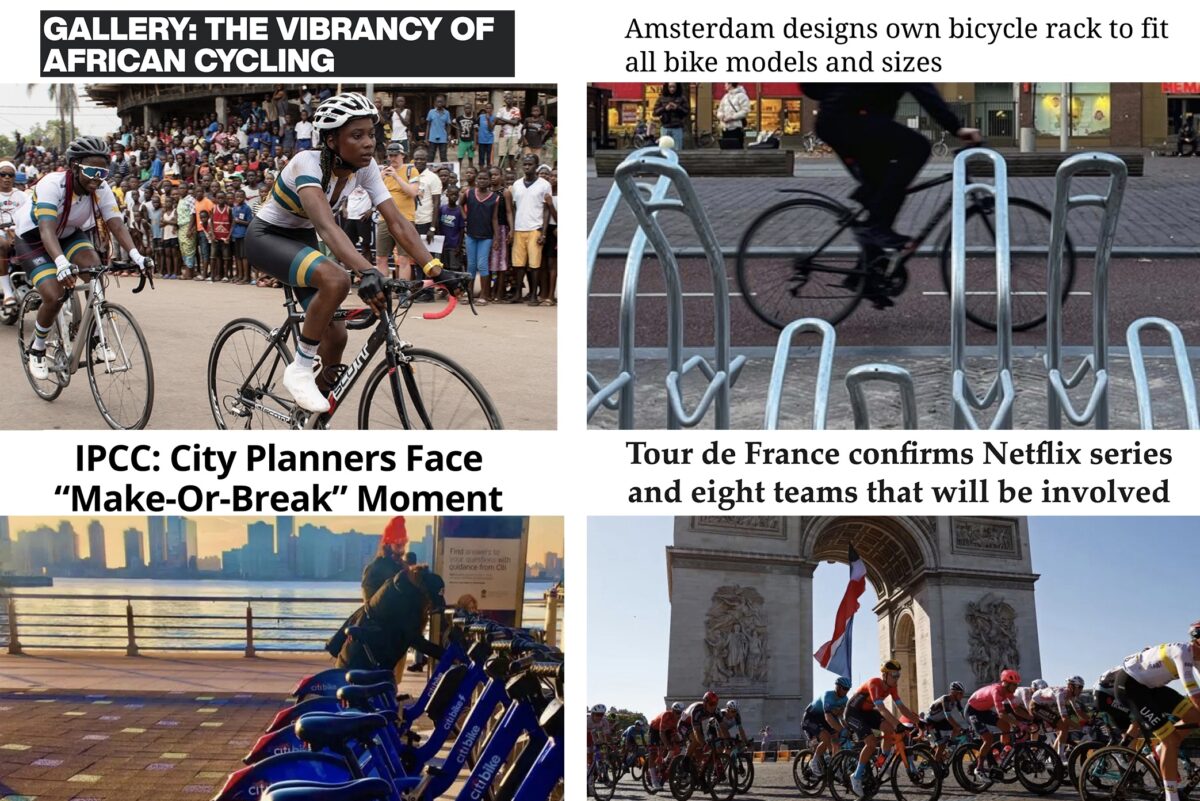
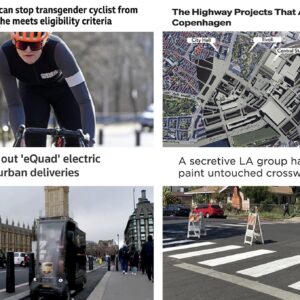
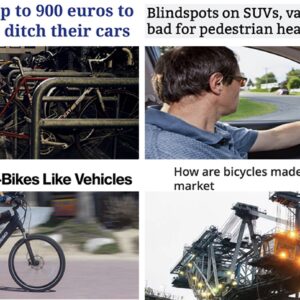
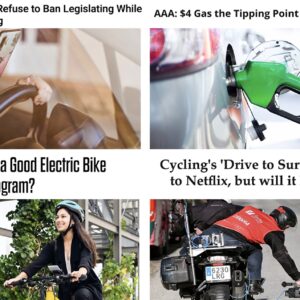
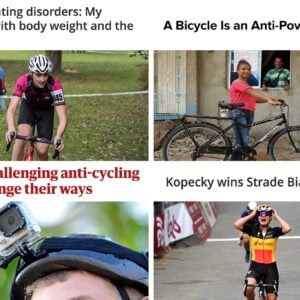
Thanks for reading.
BikePortland has served this community with independent community journalism since 2005. We rely on subscriptions from readers like you to survive. Your financial support is vital in keeping this valuable resource alive and well.
Please subscribe today to strengthen and expand our work.
RE What to Fund: If your sole criteria is greenhouse gas emissions, the data linked below suggests that, based on national averages at least, trains are better than cars, which are better than buses.
Of course, once you’ve paid the fixed cost of running a bus or train, it’s better to fill it to the gills, so from a climate perspective, it probably makes sense to focus on high-quality service on high-demand routes, especially if you can create an environment where people who would otherwise be driving will choose to take the bus (a task that, here in Portland, at least, we’ve failed miserably at).
Given the collapse of TriMet ridership, I would expect that our numbers are a fair bit worse than the national averages, but, on an individual level, it is still far better to take the bus (which will run whether you are on it or not) than to turn on your car.
https://afdc.energy.gov/conserve/mass_transit.html
***Sigh***
From the “Key Findings” of the actual study:
https://www.urbandisplacement.org/maps/housing-by-block/
It’s fascinating how the authors of this study conclude that to address our housing crisis what we really need is a systemic commitment to build social housing. This is precisely what left-wing critics of YIMBYism have been saying for decades. To address our housing crisis we need social housing, not more market-rate housing for affluent people (there is still an excess of this type of “Class A” housing in Portland).
It is also well understood that the worst impacts of displacement are in lower-income areas undergoing early gentrification. There are relatively few such areas in the very high-cost-of-living Bay Area so this study is not terribly informative for a low-density city like Portland with many diverse low-income areas that are being threatened by early gentrification.
The authors say that market-rate development, tenant protections, and expanded social housing are all complementary solutions. You quoted it:
But your antagonism towards anything YIMYish is so deeply entrenched, you seem to have read that as “we don’t need market-rate development”:
Por que no los dos? Can’t you see that market-rate development is a necessary but insufficient condition, as are tenant protections & social housing expansion?
Can’t you understand that the housing crisis is not centered on a lack of housing for affluent people (who have plenty of “Class A” market rate housing to choose from)?
Can’t you understand that I care about poor people and don’t give a “fig” about the travails of affluent people?
LOL, and who’s going to help out those “poor people”, yeah, all those affluent people you so derisively insult.
I suppose you’re the type that thinks money grows on trees. Here’s a shocker, it’s the tax money and donations all those affluent people pay that’s going to help others.
So typical, insult fellow transportation users to push forward a cycling agenda, let’s now insult the very people that’ll pay the bill to help those poor people.
Yeah, how to win friends and influence people. Good call.
The idea that poor people should be thankful for whatever rich people trickle down on them is the essence of market urbanism/YIMBYism.
Proud of you for admitting to a bias.
I must be lucky — I don’t have a limited stock of empathy so I get to care about people generally.
Regarding the YIMBYtown in Portland item: can anyone reading the BP or attending the conference report back on how successful the very public effort that Trimet / CoP did to address pre-gentrification mitigation in regards to the MAX Yellow Line construction in the early 2000s? My memory, there was a lot of public communications and “effort” to prepare small business owners with financial planning (and purchase their buildings etc.) to get ahead of expected displacement trends that light rail investment typically creates. But I don’t think I saw any post project report or assessment…
[Though the Interstate commercial corridor took an extra 10 years to ‘pop’ vs bike transit corridors like Mississippi that did it without Trimet investment.]
LOL on the Charlotte NC ‘bike gang’ story; this is how the PPB treated CM and ZB in the beginning also. Also reminds me of the popo response to the Oakland CA scraper and NYC bike scenes.